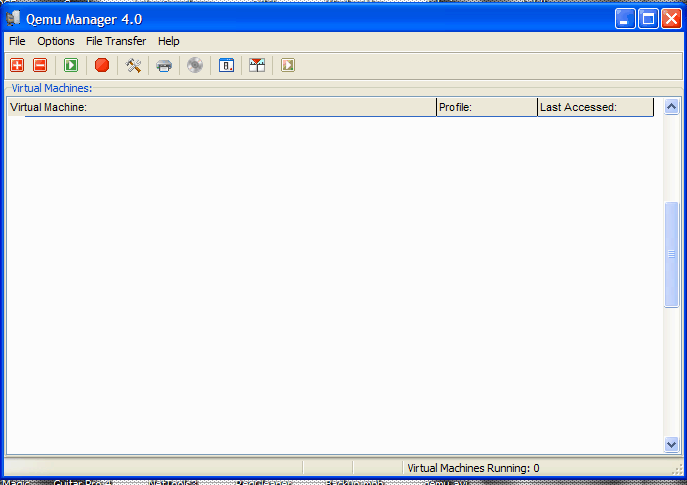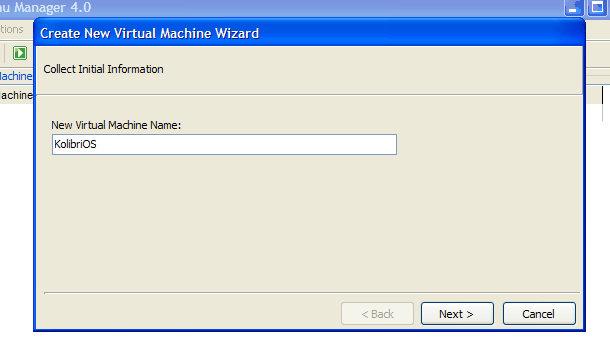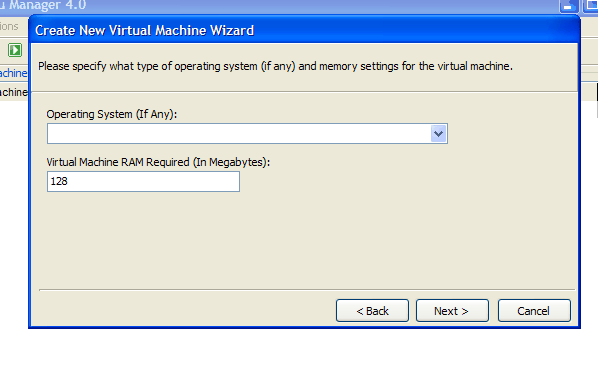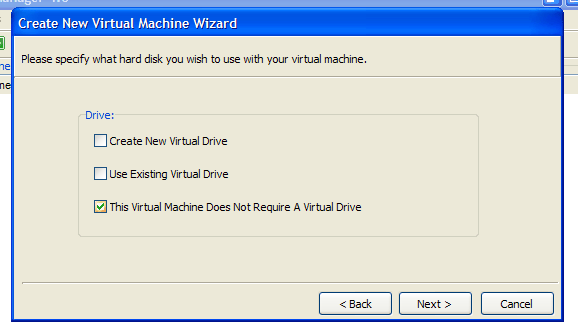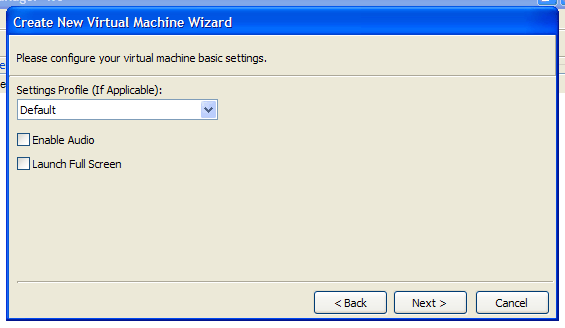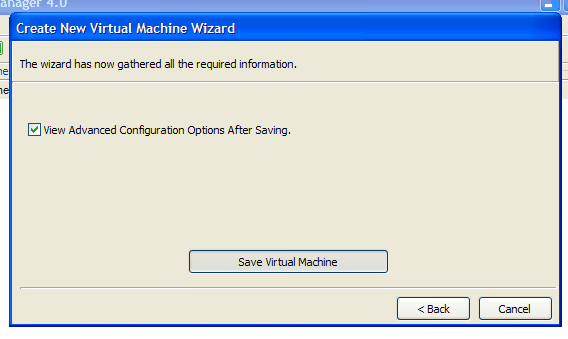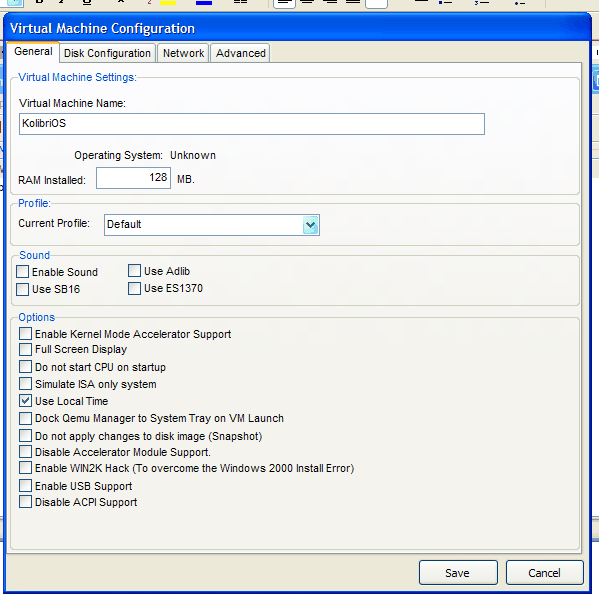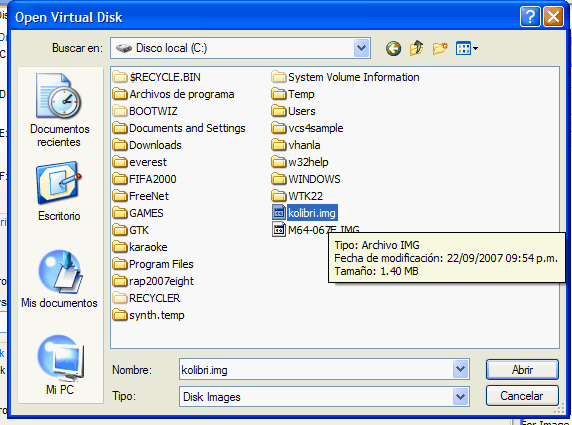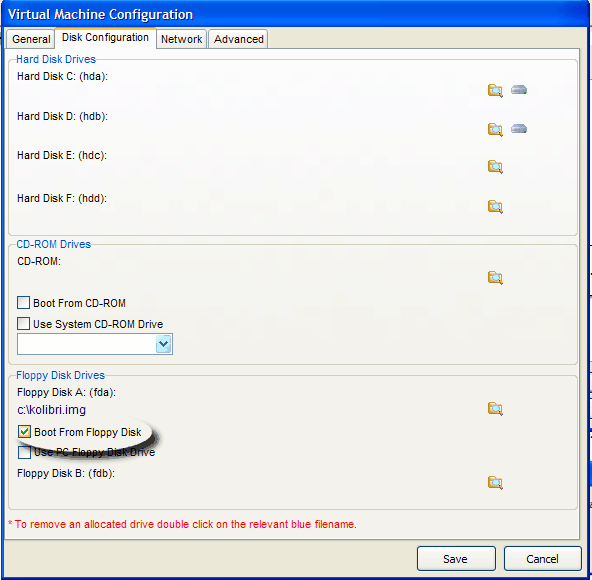Difference between revisions of "Setting up QEMU"
| Line 1: | Line 1: | ||
The purpose of this tutorial is to setup KolibriOS in QEMU (virtual machine emulator). | The purpose of this tutorial is to setup KolibriOS in QEMU (virtual machine emulator). | ||
| − | =Using command line= | + | ==Using command line== |
| − | If you already familiar with QEMU but have | + | If you already familiar with QEMU but have toubles with net, simply add following options to the qemu start command: |
<code>-net nic,model=ne2k_pci -net user</code> | <code>-net nic,model=ne2k_pci -net user</code> | ||
| Line 9: | Line 9: | ||
It should work fine. So the whole run command looks like this: | It should work fine. So the whole run command looks like this: | ||
| − | <code>qemu -L . -m 128 -fda kolibri.img -boot a -hda c100.img -hdb c100_2.img -localtime -vga vmware -net nic,model=ne2k_pci -net user -soundhw ac97</code> | + | <code>qemu -L . -m 128 -fda /path/to/kolibri.img -boot a -hda /path/to/c100.img -hdb /path/to/c100_2.img -localtime -vga vmware -net nic,model=ne2k_pci -net user -soundhw ac97</code> |
| − | =Using Qemu Manager= | + | Where |
| + | |||
| + | -L . | ||
| + | :BIOS, VGA BIOS and keymaps in current directory. <ref>http://qemu.weilnetz.de/qemu-doc.html#index-g_t_002dL-93</ref> | ||
| + | -m 128 | ||
| + | :Virtual RAM size to megs megabytes. <ref>http://qemu.weilnetz.de/qemu-doc.html#index-g_t_002dm-21</ref> | ||
| + | -fda /path/to/kolibri.img | ||
| + | :Floppy disk image <ref>http://qemu.weilnetz.de/qemu-doc.html#index-g_t_002dfda-31</ref> | ||
| + | -boot a | ||
| + | :Boot floppy first <ref>http://qemu.weilnetz.de/qemu-doc.html#index-g_t_002dboot-20</ref> | ||
| + | -hda /path/to/c100.img | ||
| + | -hdb /path/to/c100_2.img | ||
| + | :Hard disk image <ref>http://qemu.weilnetz.de/qemu-doc.html#index-g_t_002dhda-33</ref> | ||
| + | -localtime | ||
| + | :Set virtual machine time to host machine time | ||
| + | -vga vmware | ||
| + | :Emulating vga card <ref>http://qemu.weilnetz.de/qemu-doc.html#index-g_t_002dvga-60</ref> | ||
| + | -net nic,model=ne2k_pci -net user | ||
| + | :Net settings <ref>http://qemu.weilnetz.de/qemu-doc.html#index-g_t_002dnet-70</ref> | ||
| + | -soundhw ac97 | ||
| + | :Emulating sound hardware <ref>http://qemu.weilnetz.de/qemu-doc.html#index-g_t_002dsoundhw-26</ref> | ||
| + | |||
| + | |||
| + | ==Using Qemu Manager== | ||
'''Step by step tutorial''' follows! | '''Step by step tutorial''' follows! | ||
| Line 66: | Line 89: | ||
Now just click Play, and let it fly! | Now just click Play, and let it fly! | ||
| + | |||
| + | ==References== | ||
| + | <references/> | ||
[[Category:Manuals]] | [[Category:Manuals]] | ||
Revision as of 23:42, 21 May 2013
The purpose of this tutorial is to setup KolibriOS in QEMU (virtual machine emulator).
Using command line
If you already familiar with QEMU but have toubles with net, simply add following options to the qemu start command:
-net nic,model=ne2k_pci -net user
It should work fine. So the whole run command looks like this:
qemu -L . -m 128 -fda /path/to/kolibri.img -boot a -hda /path/to/c100.img -hdb /path/to/c100_2.img -localtime -vga vmware -net nic,model=ne2k_pci -net user -soundhw ac97
Where
-L .
- BIOS, VGA BIOS and keymaps in current directory. [1]
-m 128
- Virtual RAM size to megs megabytes. [2]
-fda /path/to/kolibri.img
- Floppy disk image [3]
-boot a
- Boot floppy first [4]
-hda /path/to/c100.img -hdb /path/to/c100_2.img
- Hard disk image [5]
-localtime
- Set virtual machine time to host machine time
-vga vmware
- Emulating vga card [6]
-net nic,model=ne2k_pci -net user
- Net settings [7]
-soundhw ac97
- Emulating sound hardware [8]
Using Qemu Manager
Step by step tutorial follows! We’re going to need these programs/files:
- Qemu Manager – download it from www.davereyn.co.uk
- KolibriOS floppy disk image – www.kolibrios.org
The first thing we’re going to do is to setup KolibriOS virtual machine on Qemu Manager, so it’s assumed that you have installed it already.
Launch Qemu Manager and you will see the following window.
Click on the ![]() toolbar button to add a new machine. Then it will ask you to write the new virtual machine name:
toolbar button to add a new machine. Then it will ask you to write the new virtual machine name:
Then click Next and in that window fill the Virtual Machine RAM textbox with a RAM needed, remember that KolibriOS support 8MB of RAM as a minimum, I suggest using 64Mb
Click Next and in this window check “This Virtual Machine Does Not Require A Virtual Drive”
In the next window don’t modify anything:
Click Next and in the following window click on “Save Virtual Machine” button
It will show you the following window:
Select the “Disk Configuration” tab and click on the shown button, which is for choosing our KolibriOS floppy image:
Then select the appropiate floppy image
It will warn you but just click YES to continue:
Next select “Boot from floppy disk”
Now just click Play, and let it fly!
References
- ↑ http://qemu.weilnetz.de/qemu-doc.html#index-g_t_002dL-93
- ↑ http://qemu.weilnetz.de/qemu-doc.html#index-g_t_002dm-21
- ↑ http://qemu.weilnetz.de/qemu-doc.html#index-g_t_002dfda-31
- ↑ http://qemu.weilnetz.de/qemu-doc.html#index-g_t_002dboot-20
- ↑ http://qemu.weilnetz.de/qemu-doc.html#index-g_t_002dhda-33
- ↑ http://qemu.weilnetz.de/qemu-doc.html#index-g_t_002dvga-60
- ↑ http://qemu.weilnetz.de/qemu-doc.html#index-g_t_002dnet-70
- ↑ http://qemu.weilnetz.de/qemu-doc.html#index-g_t_002dsoundhw-26
